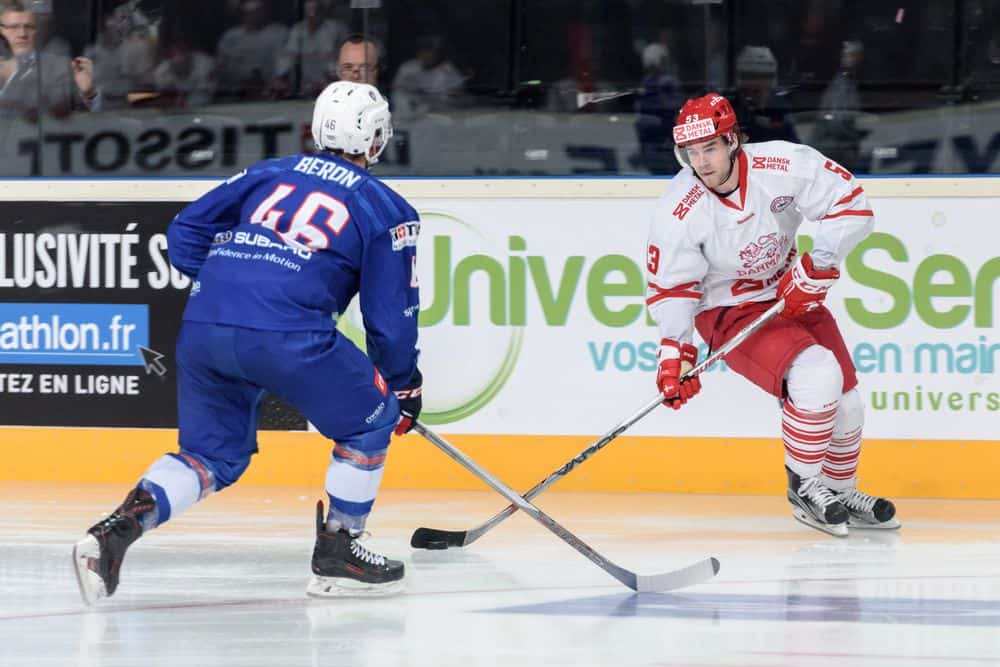Coincidentally timed trades can be a game-changer in the NHL, allowing teams to strengthen their rosters, address chemistry issues, or create salary cap space. As the March 3rd trade deadline approaches, understanding the intricacies of NHL trades becomes paramount.
From the types of trades to eligibility and assets, this article explores the process and significance of making trades in the NHL. By delving into these details, teams can make informed decisions and potentially elevate their chances of success in the highly competitive world of professional hockey.
NHL Trade Deadlines and Regular Season
The NHL trade deadlines and regular season are crucial periods for teams to strategize and maneuver their rosters. During this time, teams carefully evaluate their current roster and identify areas of improvement or weakness that could be addressed through trades.
Trade rumors often circulate during this period, with teams exploring potential deals to strengthen their lineup. Teams employ various trade deadline strategies, such as targeting specific players or positions, assessing the salary cap implications of potential trades, and considering the long-term impact on team chemistry.
Additionally, teams must navigate the intricacies of the trade deadline, ensuring that deals are completed before the deadline to maintain playoff eligibility.
Trade deadlines and the regular season provide teams with opportunities to make strategic moves and enhance their chances of success in the highly competitive NHL.
Definition and Types of NHL Trades
NHL trades occur throughout the regular season and are governed by specific rules and guidelines. An NHL trade is an agreement between two teams to exchange players, draft picks, or other assets. Trades can be used to acquire talent, create salary cap space, or shake up a team’s roster.
There are different types of trades, including player-for-player trades, prospect-for-prospect trades, draft pick swaps, and cash considerations. When making a trade, factors such as salary cap space, chemistry issues, and evaluating player performance and prospects for success must be considered.
Trades can have a significant impact on team chemistry, as bringing in new players can disrupt the existing dynamics within a team. It is crucial for teams to carefully consider the potential impact on team chemistry before making trade decisions.
Process of Making NHL Trades
Teams in the NHL engage in the process of making trades by initiating negotiations and reaching agreements on player exchanges, draft pick swaps, and other assets. This process involves careful trade negotiation strategies and trade analysis and evaluation. When teams consider making a trade, they take into account various factors, such as salary cap space, chemistry issues, and evaluating player performance and prospects for success. To facilitate the trade process, teams submit their proposed trade to the NHL for approval. Once approved, both teams confirm their acceptance of the trade in writing before it becomes official. It is essential to carefully analyze and evaluate the potential impact of a trade on the team’s roster and future prospects. By implementing effective trade negotiation strategies and conducting thorough trade analysis and evaluation, NHL teams can make trades that enhance their chances of success.
| Trade Negotiation Strategies | Trade Analysis and Evaluation |
|---|---|
| – Assess team needs and identify potential trade targets | – Evaluate player performance and potential |
| – Determine the value of assets being traded and negotiate fair terms | – Consider chemistry and fit within the team |
| – Explore multiple trade options and potential trade partners | – Assess the long-term impact of the trade on the team |
Factors to Consider in NHL Trades
When considering trades in the NHL, teams must carefully evaluate various factors, such as salary cap constraints, player chemistry, and performance analysis. These factors play a crucial role in evaluating trade offers and devising strategies for maximizing value in NHL trades.
The salary cap serves as a limitation for teams, as they must ensure that any trade they make fits within the designated budget. This requires careful financial planning and consideration of the long-term implications of acquiring a new player. Teams must also be mindful of potential salary cap penalties or restrictions that may arise from the trade.
Additionally, teams must consider player chemistry, as a trade can disrupt the dynamics within the roster. A successful trade not only adds talent to the team but also ensures that the new player is able to integrate well with the existing roster. This requires assessing the personalities and playing styles of both the incoming and outgoing players.
Evaluating player performance and prospects for success is also essential, as teams aim to acquire players who can contribute positively to their performance on the ice. This involves analyzing statistics, scouting reports, and potential for growth or decline. Teams must weigh the immediate impact of a trade against the long-term potential of the players involved.
Eligibility and Assets in NHL Trades
In evaluating NHL trades, teams must consider the eligibility of players, draft picks, and other assets that can be included in a trade agreement. Trade restrictions and negotiations play a crucial role in determining the feasibility and success of a trade.
Players eligible for trades include those on a team’s active roster or injured reserve list, including players under contract and those placed on waivers.
Draft picks and prospects that can be included in trades encompass future draft picks owned by a team and junior or college hockey prospects who have yet to sign an NHL contract.
Additionally, other assets such as salary cap space, cash considerations, and conditional picks can also be part of trade discussions. It is essential for teams to carefully consider these eligibility rules and potential assets when engaging in trade negotiations.
Players, Draft Picks, and Prospects in NHL Trades
Trade negotiations in the NHL involve carefully evaluating the eligibility and potential inclusion of players, draft picks, and prospects as valuable assets in trade agreements. The NHL trade market trends and the evaluation of trade value in NHL trades play a crucial role in determining the success of a trade.
When teams engage in trade discussions, they consider the following factors:
- Player Value:
- Teams assess the skill level, performance, and potential of players involved in the trade.
- They consider factors such as age, contract status, and injury history to determine a player’s value.
- Draft Picks and Prospects:
- Teams evaluate the potential of draft picks and prospects to contribute to their future success.
- The higher the draft pick or the more highly regarded the prospect, the more valuable they are in trades.
Other Assets in NHL Trades
Additionally, what other valuable assets can be included in NHL trades? In addition to players, draft picks, and prospects, NHL teams can also include other assets in trades to sweeten the deal or address specific needs. One of these assets is cash considerations, which can have a significant impact on trades. Cash considerations can be used to balance out salary disparities between players or teams, providing financial flexibility for both parties involved. Another important aspect to consider in NHL trades is the evaluation of player performance. Teams may include performance-based conditions in trades, where the success of a player or team determines additional compensation or adjustments to the trade. This evaluation allows teams to make more informed decisions and maximize the value of the assets involved.
Salary Cap Considerations in NHL Trades
To ensure compliance with the NHL’s salary cap regulations, teams must carefully consider salary cap limitations when engaging in trades. The salary cap implications and trade restrictions associated with NHL trades can significantly impact a team’s ability to make moves and manage their roster effectively.
Here are some key considerations teams must keep in mind when navigating salary cap considerations in NHL trades:
- Salary Cap Space:
- Teams must have enough salary cap space to accommodate the contracts of the players they acquire in a trade.
- Taking on a higher-priced player may require the team to shed salary elsewhere to remain under the cap.
- Long-term Financial Planning:
- Trades can have long-term financial implications, as teams must consider the impact on their salary cap situation beyond the current season.
- Evaluating the financial implications of a trade is crucial to ensure the team can sustain its roster and remain competitive in the future.
Impact of Salary Cap on NHL Trades
The salary cap in the NHL has significantly influenced the landscape of trades, affecting teams’ ability to maneuver their rosters and make strategic moves.
The introduction of the salary cap in the 2005/06 season has led to a more cautious approach when it comes to trades. Teams must carefully consider the financial implications of acquiring new players and ensure they stay within the salary cap limit of $83.5 million for the 2022-2023 season.
This has resulted in fewer trades taking place in the NHL. However, teams have developed strategies for navigating the salary cap in trades. Some teams may look to trade high-salaried players to free up cap space, while others may seek to acquire players on shorter, more affordable contracts.
Trade Deadline in the NHL
The NHL trade deadline marks the final opportunity for teams to make player exchanges and other transactions during the regular season. This deadline, which typically falls at the end of February or early March, has a significant impact on teams’ strategies and the league as a whole.
Here are a couple of key points to consider:
- Trade Deadline Impact:
- Teams evaluate their position in the standings, their playoff chances, and their roster needs to determine whether to be buyers or sellers at the deadline.
- The deadline creates a sense of urgency, with teams looking to strengthen their lineups for a playoff push or acquire future assets for a rebuild.
- Trade Deadline Strategies:
- Buyers aim to acquire key players who can make an immediate impact and improve their chances of playoff success.
- Sellers focus on trading away expiring contracts or underperforming players in exchange for prospects, draft picks, or salary cap relief.
The trade deadline is a thrilling time for fans, as teams make bold moves to shape their rosters and position themselves for postseason success.
Frequently Asked Questions
How Are Trades in the NHL Approved by the League?
The NHL trade approval process involves teams reaching an agreement and submitting it to the league for review. Once approved, both teams must confirm the trade in writing before it becomes official. The league ensures adherence to salary cap rules and records transactions in its logbook.
Can NHL Teams Make Trades During the Playoffs?
NHL teams are not allowed to make trades during the playoffs. This rule is in place to maintain team chemistry and prevent significant roster changes that could disrupt a team’s performance in the postseason.
What Happens if a Player Is Traded After the Trade Deadline?
When a player is traded after the trade deadline, they are not eligible to play in the playoffs for their new team. This can have a significant impact on team chemistry and the overall dynamics of the roster.
Are There Any Restrictions on the Number of Trades a Team Can Make in a Season?
There are no specific restrictions on the number of trades a team can make in a season. However, excessive trades can disrupt team chemistry and require time for new players to integrate into the roster.
Can Cash Considerations Be Included in NHL Trades?
Cash considerations can be included in NHL trades, providing teams with flexibility to manage their salary cap. Pros include acquiring cap relief or compensating for imbalanced player values, while cons include potential financial burdens and limited future cap space.
Conclusion
In conclusion, the timing of NHL trades is a crucial aspect of team management and strategic planning. Teams must navigate regulations such as salary cap restrictions and playoff eligibility deadlines to make informed decisions and enhance their chances of success.
By understanding the intricacies of NHL trades, teams can strategically address roster needs, create salary cap space, and improve team chemistry. Ultimately, these trades have the potential to shape the trajectory of a team’s season and impact their chances of achieving greatness in the NHL.









